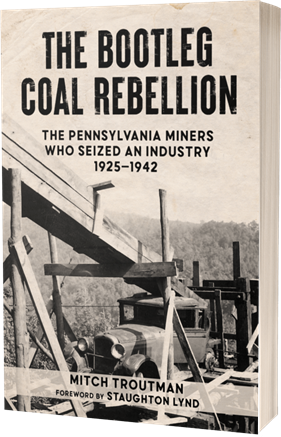
The Bootleg Coal Rebellion

“Things happen in the bootleg coal region that are almost unbelievable for anyone not familiar with the whole story. Without their background they sound utterly preposterous. They’ve probably never happened anywhere before. They couldn’t happen except in such a region and in such a set of circumstances.” ——New York Times, 1935
“We don’t know and we don’t care who’s supposed to own the land. God put that coal there—not the Philadelphia and Reading Coal Company.”——Mike McCloskey, bootleg miner Schuylkill County, 1935
In the early 1930s, the hard coal industry collapsed seemingly overnight, and some Pennsylvania towns were left with over 50% unemployment. With the Depression on and nowhere else to go, the unemployed illegally sunk their own primitive mines on company-owned grounds—by the thousands. Together they made their own solutions, seized the mountains, and stood their ground for a decade against the power of the police, coal companies, courts, and even JP Morgan. They also organized—as the unemployed, as citizens, as union members, and ultimately, as a bootleg coal miners union.
The Bootleg Coal Rebellion is the long-forgotten story of the Depression-era bootleg coal miners. Using his background in community and labor organizing, author Mitch Troutman provides an explosive and accessible profile of this phenomenal chapter in American History by retold through the bootleggers’ own eyes. Beyond illegal mining, it is also the story of convergence of the Equalization movement, the miners’ union democracy movement, and the Communist-led Unemployed Councils of the anthracite region. This history is full of important lessons about community, organic mobilization, unity and power that organizers and activists today will find both informative and inspiring.
Buy directly from PM Press or request your local library order a copy!